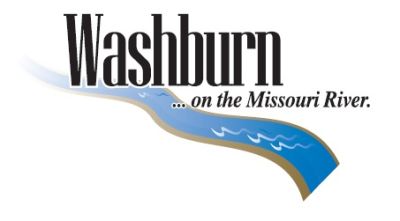History of Washburn
Washburn, ND is the oldest city in McLean County and as such has a long and interesting history. The land around the city has been recognized for its abundance of wildlife and natural beauty for hundreds of years.
The Lewis and Clark Expedition arrived at the Mandan-Hidatsa Indian villages on the Upper Missouri River on October 25, 1804 at present day Washburn. They found the Mandan people very hospitable and decided to remain at this wintering site until the spring thaw when they would resume their up-river journey. At Fort Mandan, Lewis and Clark met Sakakawea, the Indian woman who would be essential to the success of the Expedition. For more than five months, Fort Mandan was the site of considerable activity and research for the expedition.
Today, the reconstructed Fort Mandan is located 2 miles west of Washburn, ND on McLean County Highway 17 and rests in the riparian forests of the Missouri River. Also, nearby at the intersection of US Highway 83 and ND 200A, the North Dakota Lewis & Clark Interpretive Center tells more of the story of the Expedition. Visitors from around the world enjoy world-class interpretive displays of Lewis & Clark and Fort Clark, a later fur trade post, along with an art gallery and other traveling exhibits. Both Fort Mandan and the Interpretive Center are open year-around.
After Lewis & Clark led the way up the Missouri many new settlers followed including a Quaker from Pennsylvania. Joseph Henry Taylor was a trapper and hunter who was also scholarly and had a great interest in nature. Taylor was one of the first residents of Washburn and built his cabin at Painted Woods in 1869. A printer by trade, he wrote four books and numerous newspaper articles during his 40 years of pioneering in North Dakota . He was the editor of the Washburn paper, the McLean County Mail, now known as the Washburn Leader News. The original Taylor cabin was moved to Washburn in 1932 for Washburn's 50th anniversary and for preservation and exhibition. It is located in the 1000 block of East Main Avenue.
The city of Washburn was officially founded on November 1, 1882 by "King John" Satterlund. He saw that the area was a great site, with good soil, abundance of wood and coal, and excellent water transportation. Satterlund, who was also the founder of Washburn's newspaper The Leader News, selected the site for a township because he envisioned that this yet untilled area would develop as settlers came. Both Satterlund and his business partner, John Veeder, named the new town Washburn in honor of the late Wisconsin Governor Cadwallader Colden Washburn, whom both men knew in Wisconsin . Washburn was a prominent soldier, political leader and capitalist, besides being governor of Wisconsin from 1872-1874 and US Congressman from 1855-1861 and 1867-1871.
Until 1898, Washburn was one of the last stops for riverboats traveling from St. Louis , Missouri . The boats exchanged grocery and hardware materials for buffalo hides, furs and grains. At that time, the Missouri River, which was open for traffic seven and a half months of the year, was known for currents so strong that it took two weeks to travel the approximately 800 miles upstream and four days to go downstream. Coupled with shifting channels, sandbars, varying water stages and limited variety of downstream cargo, the economic and physical problems of steam boating were great. The river was still the best method of travel and at one time 40 boats plied the river with about 1,200 men working on or for them.
The Sioux Ferry was one of the last ferries used on the Missouri River . The Ferry was built by Oscar Anderson and took its maiden voyage on Memorial Day 1952, and operated until 1962. The Ferry once transported horses, autos and people from bank to bank. For years, the Sioux provided the only means of getting across the wide Missouri. A person could go down to the riverbanks, pay a small fee and ride across. If Anderson was on the other side of the river, one just waved at him to bring the Sioux over. It was closed down in the sixties because of navigation problems. Located at Riverside Park in Washburn along the Missouri River, the Sioux Ferry is on permanent display at the park.
In the mid-1970's the physical and economic landscape of the Washburn area changed forever, with the development of the energy industry on both sides of the Missouri River. Closest to Washburn is the Coal Creek Station, North Dakota 's largest coal-fired generating plant, owned and operated by Great River Energy of Elk River, MN. The Falkirk Mining Company operation located nearby provides lignite coal to the plant. Between the two operations, hundreds of jobs provide a solid economic base for the community and region.
Today, the city of Washburn is a vibrant and active community of about 1,400 residents with a strong volunteer spirit. The city has an excellent school, many parks, and a community swimming pool. There are many outdoor activities to take advantage of including bicycling, hiking, golfing, hunting, and fishing and boating on the scenic Missouri River. The city also boasts many thriving businesses, churches, and two museums.


